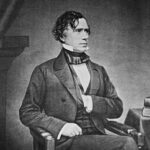The Vision for Continental Connection
President Franklin Pierce’s authorization of the Pacific Railroad Surveys in 1853 represented visionary leadership during a pivotal moment in American expansion. The comprehensive survey program allocated $150,000 to map multiple transcontinental railroad routes across the western territories. This decision demonstrated Pierce’s commitment to national unity through infrastructure development.
Scientific Excellence in Exploration
The surveys employed leading engineers, naturalists, and topographers to conduct systematic examinations of potential routes. 📊 Teams gathered crucial data on terrain, climate, resources, and construction challenges across thousands of miles. Secretary of War Jefferson Davis oversaw the project, ensuring military precision in data collection. The resulting 13-volume report became an invaluable resource for future railroad construction.
Strategic Federal Investment
Pierce’s decision marked a significant federal commitment to western development and economic integration. 💰 The surveys provided essential information that private railroad companies could not afford to gather independently. This strategic government investment reduced risks for future railroad construction and accelerated westward expansion plans.
Impact:
Foundation for Transcontinental Success
The Pacific Railroad Surveys created the technical foundation for America’s transcontinental railroad system. The detailed geographic and engineering data collected proved invaluable when Congress authorized the first transcontinental railroad in 1862. Railroad companies relied heavily on Pierce’s survey data to select optimal routes and plan construction strategies.
Economic and Scientific Benefits
💰 The surveys generated significant economic benefits by reducing construction costs and risks for future railroad projects. The comprehensive data helped railroad companies avoid costly route mistakes and engineering challenges. Additionally, the surveys advanced American scientific knowledge through detailed studies of western geology, flora, and fauna. Natural history collections enriched American museums and universities.
National Unity Through Infrastructure
🌍 Pierce’s vision of connecting the Pacific Coast to the eastern states strengthened national cohesion during a period of growing sectional tensions. The surveys demonstrated federal commitment to western territories and encouraged continued westward migration. This infrastructure planning helped integrate California’s economy with the rest of the nation. The eventual completion of transcontinental railroads fulfilled Pierce’s vision of a truly connected continental nation, facilitating trade, communication, and cultural exchange across vast distances.
